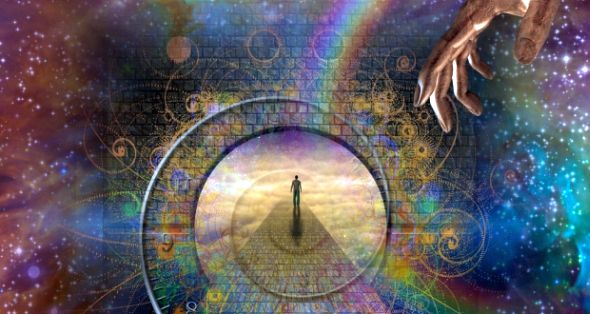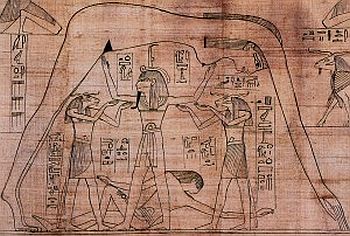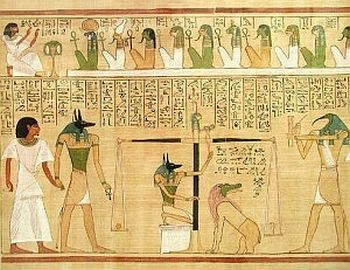Life, Death, Out-Of-Body Experiences And The Journey Of Consciousness

What is the greatest mystery of life? According to a legendary Q&A in the Indian spiritual epic the Mahabharata, the greatest wonder is that countless people die every day, yet those left behind believe they will live forever.
There is a well-known saying that the only certainty in life is death, but our hyper-connected modern society is not exactly inspiring much reflection on what lies beyond the transient.
People put aside savings for retirement, and some take out life insurance to take care of the loved ones they leave behind. This looks after physical needs, but what about the needs of consciousness which continues without the body? What preparations are made for its journey after death – the ultimate journey of a lifetime?
Religious institutions offer a solution to their followers that usually depends on adopting a set of beliefs rather than personal spiritual discovery. On the other hand, some scientists will tell you with equal conviction that nothing comes after death, so don’t worry about it. Both of these points of view depend on belief, but what if, when the final moment comes, you realise you wasted the great opportunity your life provided? An alternative option is to discover for ourselves why we are here, and what our place in the universe is, while we are alive and have the opportunity to do something with the knowledge we gain.
Ancient spiritual cultures almost universally placed importance on the individual’s preparations and journey into the afterlife. They clearly understood our existence extended beyond our bodies, and that life and death were best seen with the bigger picture of creation in mind – as part of an ongoing journey of consciousness – with life presenting an amazing opportunity for conscious evolution that we take the fruits from after death.
This was bought home to me in an interesting way during a trip to a museum exhibition showcasing ancient Egyptian afterlife cosmology; it reminded me of the universal nature of the afterlife, and how Near-Death Experiences and Out-of-Body Experiences offer us a glimpse into the reality of existence beyond the body, revealing that awakening consciousness is what creation is really all about.
With our modern culture drifting more and more into shallow short-sighted materialism and faux metaphysics, the need to re-discover and live this deeper purpose to life, so cherished by the ancients, is more important than ever.
A Journey into the Ancient Egyptian Afterlife
I while back I was fortunate to have the opportunity to take a one-way self-guided tour through the ancient Egyptian afterlife, thanks to a special museum exhibition featuring artefacts from the British Museum collection.
The local museum was packed, and we had to wait in a queue before being allowed in. Finally we entered a dimly-lit passage thronging with people, winding past ancient Egyptian artefacts, artworks, tools, scriptures, and mummies.

It was arranged so that you went on an afterlife “journey” vicariously, stage by stage, in the way the ancient Egyptians understood it. It began with displays showing ancient Egyptian depictions of the world’s creation, and culminated with the judgement of the soul and its journey after death. In between you were shown artefacts demonstrating how ancient Egyptians understood and prepared for death.
There were ancient scrolls of the pyramid texts on display, and ancient art depicting the soul’s journey through the afterlife. A major theme in their art was judgement and the “weighing of the heart”, where a deceased person’s heart was weighed against a feather, and their fate was dependent on their inner qualities and the sum of their actions while alive. Toward the end of the exhibition they had a mockup display of this, with a large set of scales on which you could weigh your “heart” against a feather, while Egyptian Gods looked on from a mural.
After that, you passed into a depiction of the Egyptian paradise before stepping outside into the sunlight. I doubt the effect was intentional on the part of the exhibitors, but after passing through the exhibition’s dark passageway with its ordered depictions of the afterlife, judgment and then stepping into the light, I couldn’t help but think of accounts of near-death experiences, in which people often report passing through a dark tunnel toward the light, and experiencing a life review where they see the consequences of all their actions.

The exhibit really brought home to me how the ancient Egyptians understood they existed for a purpose that went beyond everyday life. Death was a doorway to the next stage of existence, and their lives were an opportunity to prepare for it. They knew we do not cease to exist when we die, and saw the quest for immortality through awakening consciousness as the real purpose to creation.
From looking at artefacts from different periods, it was apparent the ancient Egyptian understanding of death changed over time. It seemed to me that originally, the emphasis was on living spiritually and obtaining an immortality of the soul, while in later periods their understanding declined into more literal interpretations of preparing the body (rather than consciousness) for the afterlife through mummification, and a preoccupation with the arrangement of one’s burial and tomb with the right spells and amulets.
But I was vividly struck by how through that civilisation’s long and varied existence, the importance of the afterlife always reigned supreme, and being prepared for life after death was absolutely central to existence. Death, and therefore life, was taken very seriously.
I couldn’t help but notice a stark contrast between our modern culture and theirs. It was a bit like being in some kind of time warp, where two very different cultures collided. The artefacts of the Egyptians gave a sense of the sacredness of life and creation, but the bustling, noisy crowds of modern onlookers apparently saw this ancient preoccupation with the afterlife as mere novelty and amusement. How different ancient Egypt was to our modern society where the reality, and inevitability, of death is given little thought or preparation, and the understanding that consciousness continues after death is often summarily discounted and ridiculed.
I highly doubt that many people who attended the exhibition paused to reflect on whether they would continue to exist after death and, if so, how? And why are we here anyway? This was driven home when, just prior to reaching the scales of “judgement”, I noticed a whiteboard, styled with papyrus veneer, with a pertinent question written at the top.
What would you take with you to the afterlife?
Continue reading . . .

Why must you have such a fuzzy and grey font that is difficult to read?
Great topic though, so i am frustrated that it’s so hard to see/read the text.
I apologize for your difficulty reading the type, Mylo. It is the standard type that is set for the WordPress 2012 blog. It displays differently based on browser being used, operation system (Windows, Apple, Linux, etc.) equipment (desktop, ipad, iphone), and any personal settings made for viewing pages online. I wish the type were heavier as well but I don’t know how to adjust css (the style sheet). Thanks nonetheless for visiting Shift Frequency. Hugs, g